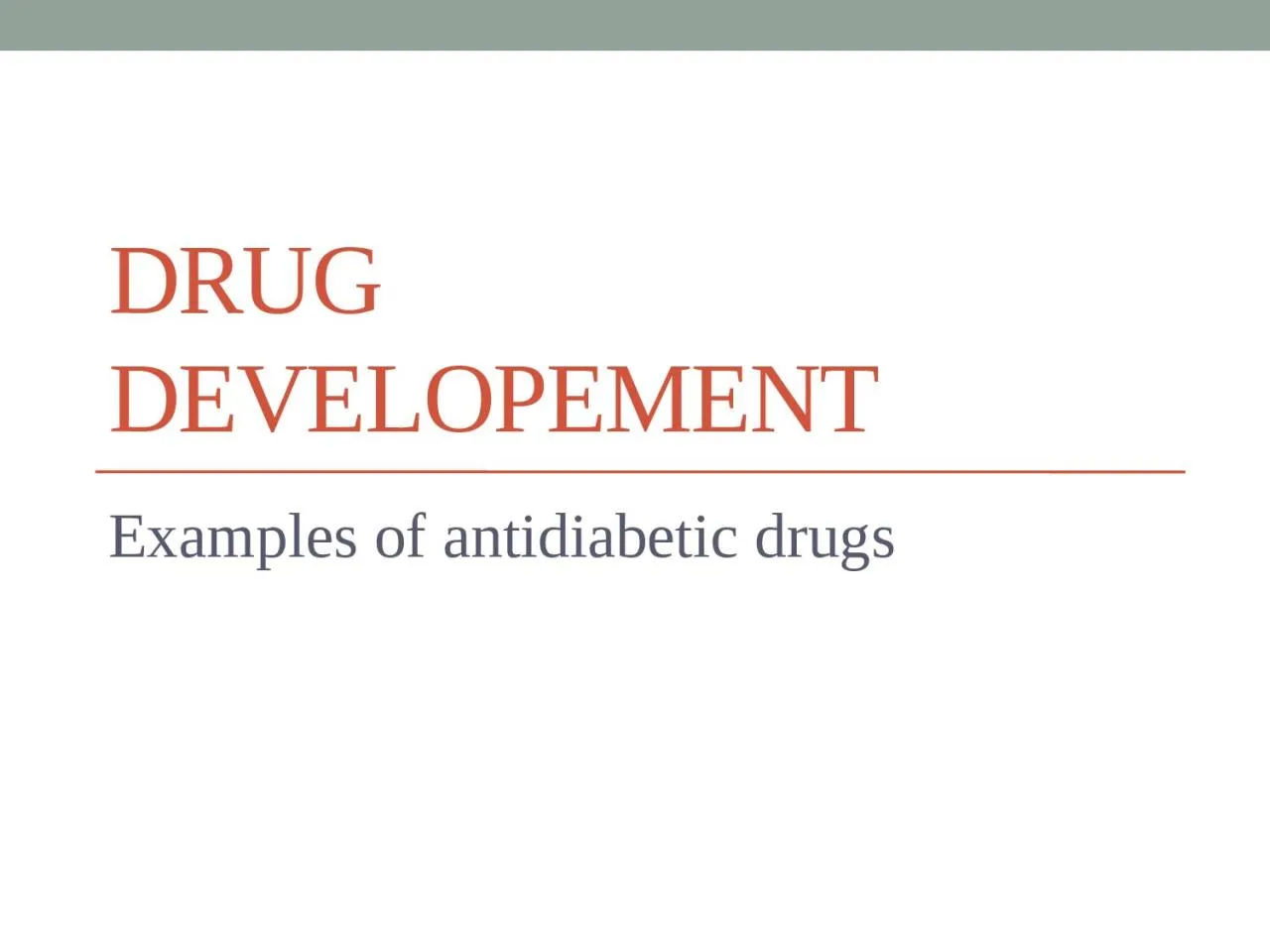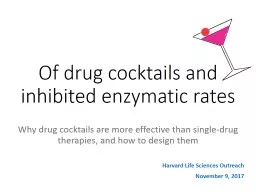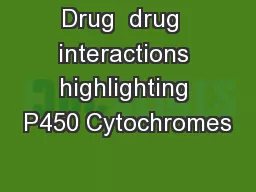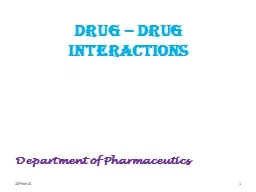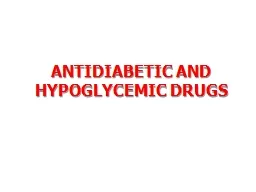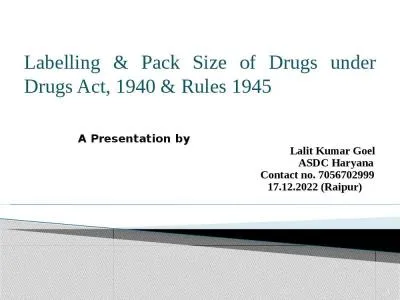PPT-DRUG DEVELOPEMENT Examples of antidiabetic drugs
Author : fauna | Published Date : 2022-06-07
The oldest oral antidiabetic drugs active against type 2 diabetes are SUR they increase pancreatic insulin secretion More recently repaglinide a meglitinide
Presentation Embed Code
Download Presentation
Download Presentation The PPT/PDF document "DRUG DEVELOPEMENT Examples of antidiabet..." is the property of its rightful owner. Permission is granted to download and print the materials on this website for personal, non-commercial use only, and to display it on your personal computer provided you do not modify the materials and that you retain all copyright notices contained in the materials. By downloading content from our website, you accept the terms of this agreement.
DRUG DEVELOPEMENT Examples of antidiabetic drugs: Transcript
Download Rules Of Document
"DRUG DEVELOPEMENT Examples of antidiabetic drugs"The content belongs to its owner. You may download and print it for personal use, without modification, and keep all copyright notices. By downloading, you agree to these terms.
Related Documents

